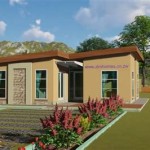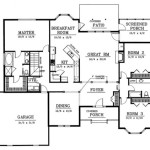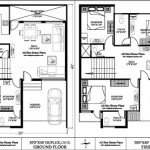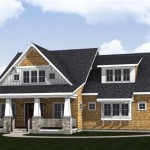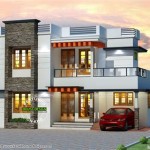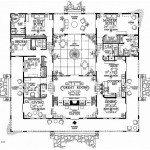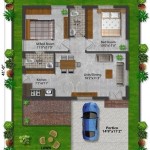Small Beach Cottage Plans On Pilings: Elevating Coastal Living
Beach cottages evoke images of relaxation, simplicity, and a connection with the natural environment. When these cottages are built on pilings, they gain an added layer of resilience and adaptability, particularly in coastal areas prone to flooding, erosion, and storm surges. This article explores the key considerations and benefits associated with small beach cottage plans designed for construction on pilings, providing a comprehensive overview for prospective homeowners and builders.
Building a beach cottage on pilings is not simply a matter of aesthetics; it is often a practical necessity driven by the specific environmental conditions of the site. Pilings, which are essentially vertical supports driven deep into the ground, elevate the structure above the potential reach of floodwaters and can mitigate the impact of wave action. This elevation also enhances ventilation beneath the cottage, helping to prevent moisture buildup and reduce the risk of mold and pest infestations. Furthermore, pilings can minimize the disturbance to the natural landscape, preserving the existing vegetation and drainage patterns.
Understanding Pilings and Their Foundations
The foundation of any structure is paramount, and for beach cottages on pilings, this foundation is crucial for withstanding the harsh coastal environment. The selection of appropriate piling materials and their proper installation are critical factors in ensuring the long-term stability and durability of the cottage.
Several types of pilings are commonly used in coastal construction, each with its own strengths and limitations. Timber pilings, often treated with preservatives to resist decay and insect damage, are a traditional and cost-effective option for smaller cottages and stable soil conditions. Concrete pilings offer significantly greater strength and resistance to corrosion, making them suitable for larger structures and areas with high wave energy. Steel pilings, while strong and durable, can be susceptible to corrosion in saltwater environments unless properly protected with coatings or cathodic protection systems. Composite pilings, made from materials like fiberglass or recycled plastics, provide a lightweight and corrosion-resistant alternative, gaining popularity in sustainable construction projects.
The depth to which pilings must be driven depends on various factors, including the soil composition, the anticipated loads, and the expected flood levels. Soil testing is essential to determine the bearing capacity of the ground and to ensure that the pilings are securely anchored in stable strata. Engineers use this data to calculate the required piling depth and spacing to distribute the weight of the cottage evenly and to resist uplift forces from wind and waves. In some cases, concrete collars or footings may be added at the base of the pilings to increase their bearing area and stability.
The installation process for pilings typically involves driving them into the ground using specialized equipment such as pile drivers or vibratory hammers. Accurate alignment and spacing are crucial to ensure that the structure is properly supported and that the load is distributed evenly across all the pilings. After installation, the tops of the pilings are typically capped with concrete or timber beams to create a level platform on which the cottage framing can be built.
Designing Small Beach Cottage Plans for Piling Foundations
Designing a small beach cottage for construction on pilings requires careful consideration of several factors, including the size and layout of the cottage, the architectural style, and the integration of the piling foundation. The design should optimize the use of space while maintaining structural integrity and aesthetic appeal.
Small beach cottage plans often feature open floor plans to maximize the feeling of spaciousness and to facilitate natural light and ventilation. Living areas, kitchens, and dining spaces are often combined into a single, flowing area, creating a versatile and comfortable living environment. Bedrooms are typically compact and functional, designed to provide a private retreat for rest and relaxation. Bathrooms are often efficiently designed with space-saving fixtures and layouts.
The architectural style of a beach cottage can vary widely, ranging from traditional coastal styles to more modern and contemporary designs. Traditional styles often incorporate elements such as shingle siding, gable roofs, and large porches, evoking a sense of charm and nostalgia. Modern designs may feature clean lines, large windows, and open-air decks, emphasizing the connection with the surrounding landscape. Regardless of the architectural style, the design should be appropriate for the coastal environment and should complement the natural surroundings.
The integration of the piling foundation into the overall design is a critical aspect of the planning process. The pilings should be positioned to provide adequate support for the cottage while minimizing their visual impact. The space between the pilings can be used for parking, storage, or outdoor living areas. In some cases, the pilings can be concealed by skirting or landscaping, creating a more finished and aesthetically pleasing appearance.
Accessibility is another important consideration when designing a beach cottage on pilings. Ramps or stairs are typically required to access the elevated living space. The design should comply with accessibility standards to ensure that the cottage is usable by people of all ages and abilities. Elevators or lifts may be necessary for larger cottages or for those with mobility limitations.
Material selection also plays a significant role in the design of a beach cottage on pilings. Materials should be durable, weather-resistant, and low-maintenance to withstand the harsh coastal environment. Pressure-treated lumber, composite decking, and corrosion-resistant fasteners are commonly used in coastal construction. Roofing materials should be chosen for their ability to withstand high winds and heavy rainfall. Windows and doors should be impact-resistant and energy-efficient to protect the interior from the elements and to reduce energy consumption.
Key Considerations for Constructing Beach Cottages on Pilings
The construction of a beach cottage on pilings involves a series of steps, each requiring careful planning and execution. Site preparation, foundation installation, framing, and finishing are all critical stages in the construction process.
Site preparation typically involves clearing the land of any vegetation or debris and grading the soil to create a level building platform. Erosion control measures should be implemented to prevent soil runoff and sedimentation during construction. Permits and approvals from local authorities may be required before construction can begin.
The installation of the piling foundation is a critical and specialized task that should be performed by experienced professionals. The pilings must be driven to the correct depth and alignment to ensure the stability of the structure. The tops of the pilings must be properly capped and braced to create a level and solid platform for the framing.
Framing involves constructing the structural skeleton of the cottage, including the walls, roof, and floors. The framing should be designed to withstand wind and wave loads, as well as the weight of the building materials and occupants. Proper bracing and anchoring are essential to ensure the structural integrity of the cottage.
Finishing involves installing the exterior siding, roofing, windows, doors, and interior finishes. The finishing materials should be chosen for their durability, weather resistance, and aesthetic appeal. Proper insulation and ventilation are important for energy efficiency and comfort.
Coastal construction often presents unique challenges that require specialized knowledge and experience. Contractors should be familiar with local building codes, flood zone regulations, and environmental protection requirements. They should also have experience working with piling foundations and other coastal construction techniques.
Maintaining a beach cottage on pilings requires ongoing attention to prevent deterioration and to ensure its long-term durability. Regular inspections should be conducted to identify any signs of damage or wear. Prompt repairs should be made to prevent minor problems from escalating into major issues.
Pilings should be inspected periodically for corrosion, decay, or damage. Protective coatings or treatments should be applied as needed to extend their lifespan. Drainage systems should be kept clear to prevent water from accumulating around the pilings. Landscaping should be maintained to prevent vegetation from interfering with the structure or the pilings.
Overall, small beach cottage plans on pilings offer a sustainable and resilient solution for coastal living. By understanding the principles of piling foundations, designing for the coastal environment, and employing proper construction techniques, homeowners can enjoy the benefits of a beautiful and durable beach cottage for years to come.

Elevated Piling And Stilt House Plans Coastal From Home

Family S 576 Sq Ft Stilt Beach House

Small Stilt House Plans Beach Modern

Elevated Piling And Stilt House Plans Coastal Home Beach On Stilts Cottage Decor

Beach House Plans Coastal Home On Stilts

Elevated Piling And Stilt House Plans Coastal From Home

Plan 052h 0084 The House

Beach House Plans Coastal Home Great Design

Clearview 1600p 1600 Sq Ft On Piers Beach House Plans By Cat Homes Small Houses

Stilt House Plan With Decks And Charm 3928

